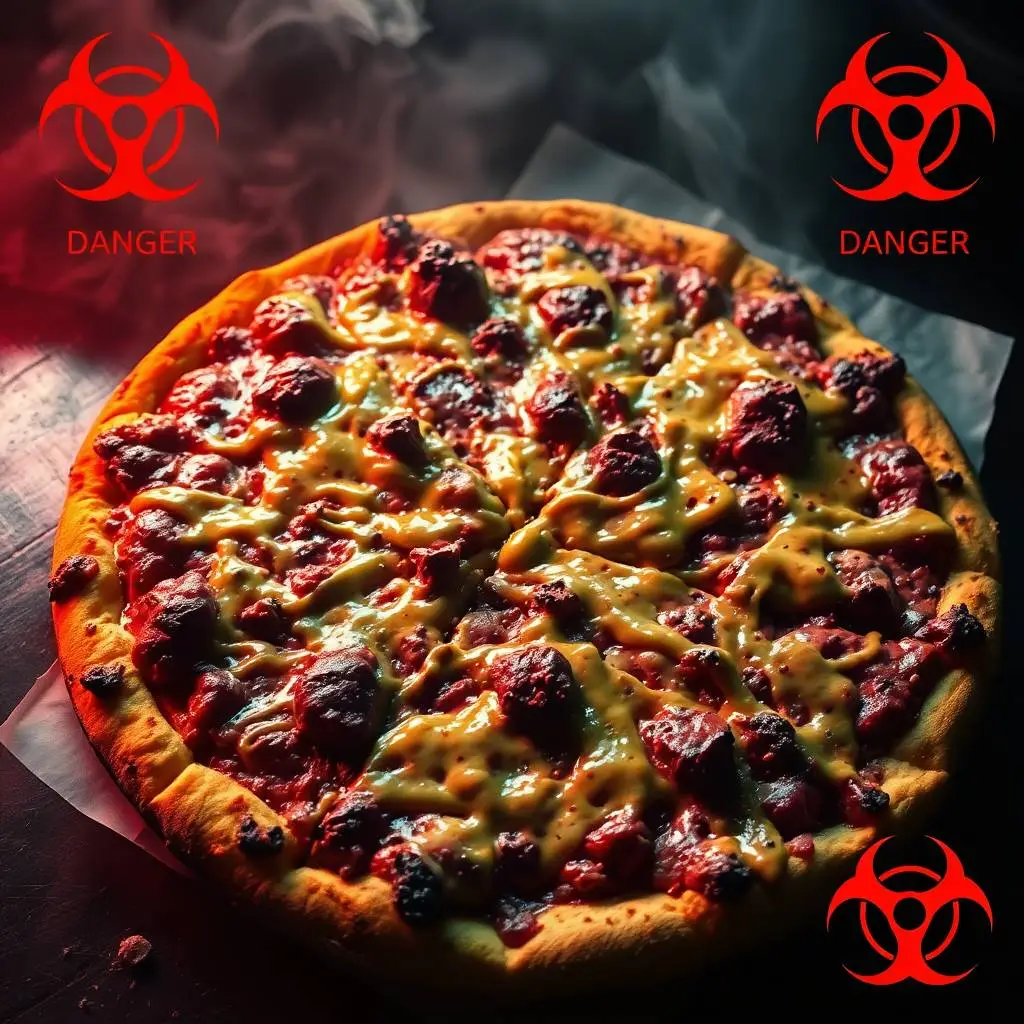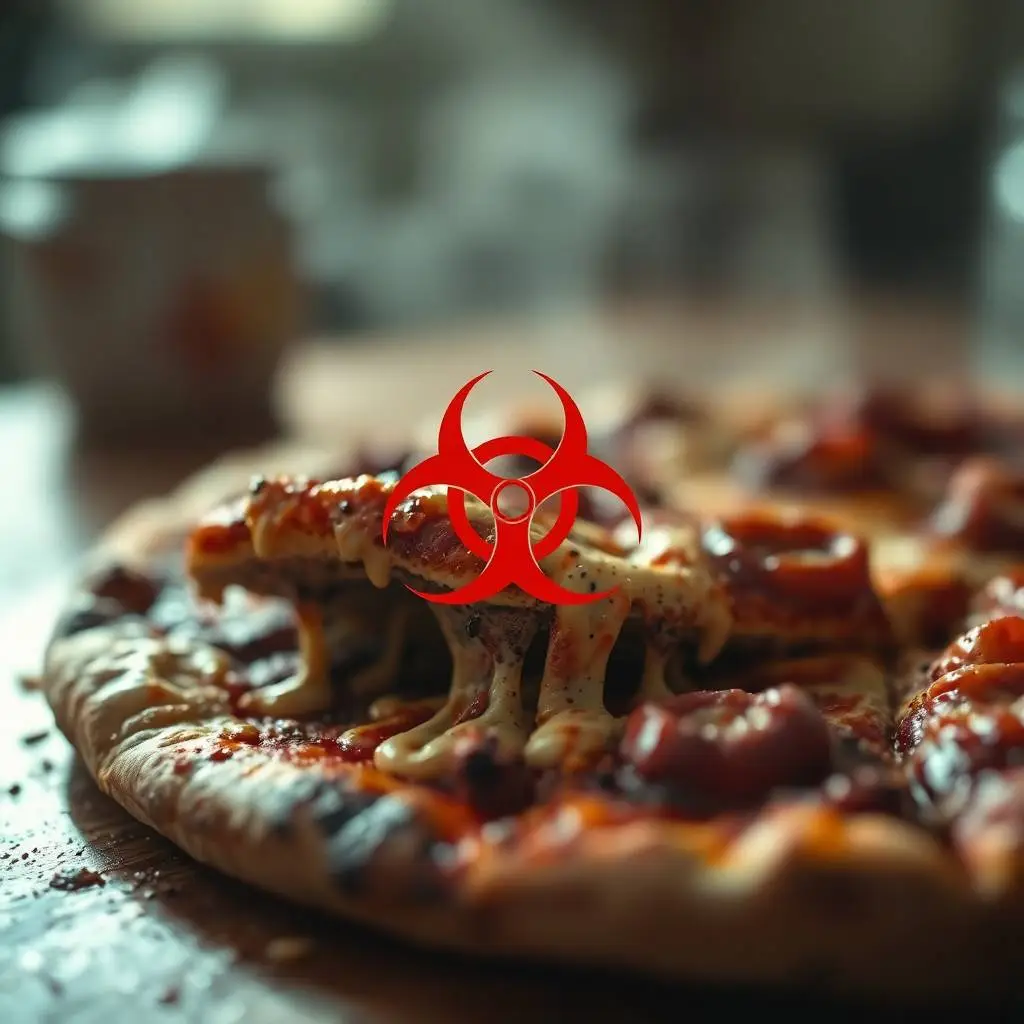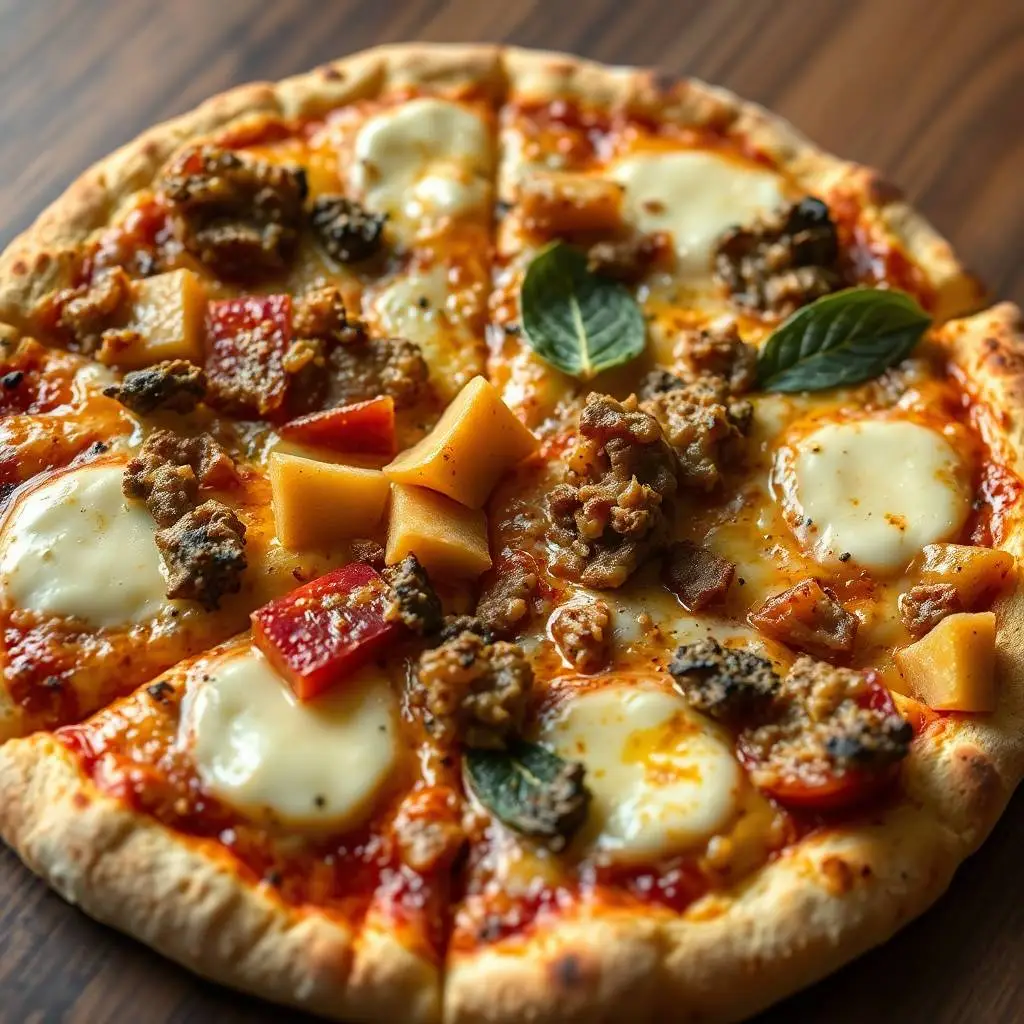Pizza is one of the world’s favorite comfort foods—deliciously enjoyable whether it’s fresh from the oven or straight from the refrigerator as leftovers. Yet, as tempting as leftover pizza might be, it’s important to understand exactly how long pizza lasts safely in your fridge, and when it becomes risky to consume. Proper pizza storage isn’t just about preserving that irresistible taste; it’s about preventing food waste and protecting your health from potentially dangerous foodborne illnesses. According to food-safety experts like the USDA and FDA, refrigerated leftovers—including pizza—have specific recommended shelf-life guidelines to avoid bacteria such as Salmonella, E. coli, or Listeria.
In this comprehensive guide, you’ll discover how long pizza safely stays fresh in your fridge, the best storage methods to extend its freshness, clear signs your pizza has spoiled, safe reheating techniques, and important food safety tips so you can safely enjoy your leftovers every time. So, How Long Is Pizza Good For In The Fridge?
How Long Is Pizza Good for in the Fridge?
Leftover pizza will typically stay fresh in the fridge for 3–4 days when stored in airtight containers or tightly wrapped. For best flavor and safety, reheat thoroughly to an internal temperature of 165°F (74°C), and always check for signs of spoilage before eating.
General Recommended Fridge Storage Timeline for Leftover Pizza (According to USDA and FDA)
When it comes to storing leftover pizza, following proper food safety guidelines provided by authoritative sources like the United States Department of Agriculture (USDA) and the Food and Drug Administration (FDA) is essential.
Here are some clear guidelines and recommendations:
1. General Rule of Thumb: 3–4 Days Maximum
Both the USDA and FDA recommend that cooked food—including leftover pizza—should be stored safely in the refrigerator for no more than 3 to 4 days. Beyond this duration, the risk of foodborne bacteria growth significantly increases.
2. Four-Day Safety Margin Explained
Why four days? According to food safety studies by USDA experts, harmful bacteria such as Salmonella, Listeria, and E. coli can grow rapidly at temperatures above 40°F (4°C). Even at refrigeration temperatures (below 40°F or 4°C), spoilage organisms and some bacteria can still slowly reproduce. The four-day guideline is thus a recommended timeframe for optimum safety and freshness.
3. Homemade Pizza vs. Restaurant or Takeout Pizza
- Homemade pizza: Usually has fewer preservatives and additives. It’s still safe for 3–4 days max, following proper storage rules.
- Restaurant or takeout pizza: Commonly contains preservatives to enhance shelf-life, yet both USDA and FDA guidelines suggest the same 3–4 days timeline for safety.
4. Pizza Toppings: How They Affect Storage Timeline
Certain toppings influence pizza’s refrigeration shelf life and must be stored cautiously:
- Meat-based toppings (pepperoni, sausage, chicken, ham): Can spoil faster due to higher protein content, thus adhering closely to the 3–4 day maximum is particularly essential.
- Vegetable toppings: Still follow the maximum 3–4 day rule, although toppings such as spinach, mushrooms, and tomatoes may get mushy or slimy quickly, reducing the quality earlier.
5. Proper Temperature and Storage Conditions
To ensure this recommended timeline is valid, the USDA emphasizes always maintaining refrigerator temperatures at or below 40°F (4°C). Adequate sealing of pizza slices (using airtight containers, ziplock bags, or plastic wraps) is also crucial in slowing spoilage and bacterial growth.
6. After the Four-Day Window: What Should You Do?
- If pizza has been refrigerated longer than four days, USDA guidelines strongly advise discarding it to prevent potential food poisoning risks. It’s better to be safe than potentially sorry.
- Always avoid “taste-testing” refrigerated pizza after this recommended window, as dangerous bacteria can’t always be detected through taste, smell, or appearance alone.
Best Methods for Storing Pizza in Your Refrigerator to Enhance Freshness

Keeping leftover pizza tasting delicious and safe requires proper storage techniques. How you store pizza directly affects its flavor, texture, and moisture content, while also greatly influencing its safety. By following these simple, expert-backed methods and best practices, you can ensure your leftover pizza remains fresh, safe, and enjoyable for days:
1. Always Store Pizza in Airtight Containers
One of the easiest and most effective ways to preserve your pizza freshness is by placing leftover slices in airtight storage containers.
– Airtight containers prevent airflow, minimizing moisture loss and dryness.
– They protect your pizza from absorbing odors and flavors from other foods in the refrigerator.
– Proper sealing also acts as a barrier against potential bacteria and contaminants.
Alternatively, sealable plastic bags (such as Ziplock bags) that are securely closed can also provide airtight protection and are space-efficient in the fridge.
2. Wrap Pizza Slices Tightly if Containers Aren’t Available
If airtight containers aren’t handy, wrap each pizza slice tightly using plastic wrap (cling film), aluminum foil, or a combination of both to ensure maximum freshness:
– Plastic wrap seals moisture effectively, maintaining the pizza’s softness.
– Aluminum foil helps keep slices fresh by creating an additional barrier against odors, bacteria, and moisture loss.
– Ensure no slice areas are left exposed, as air exposure accelerates dryness and spoilage.
3. Refrigerate Pizza Promptly – Ideally Within 2 Hours
The USDA strongly recommends refrigerating cooked foods—including pizza—within **two hours or sooner after serving or delivery**, and within **one hour** if room temperature is higher than 90°F (32°C). Prompt refrigeration:
– Prevents rapid growth of dangerous bacteria, such as Salmonella, Listeria, or E. coli.
– Ensures taste, freshness, and safety are preserved.
– It is crucial in preventing foodborne illnesses and maintaining overall food quality.
4. Refrigerate at the Correct Temperature
The FDA states clearly that food should be refrigerated consistently at a temperature of **40°F (4°C) or below**. Using proper refrigeration temperatures:
– Helps greatly reduce the speed at which harmful bacteria multiply and spread on leftover pizza.
– Keeps your pizza slices fresh much longer, maintaining quality and taste.
– Ensures your leftovers stay safe to consume within the USDA-recommended timeframe (3-4 days).
Use a refrigerator thermometer regularly to verify your fridge maintains an optimal temperature.
5. Use Parchment or Wax Paper to Separate Pizza Slices
If storing several slices, avoid stacking them directly on top of each other as toppings or cheese may stick together, damaging your pizza slices.
– Using parchment paper or wax paper between each slice stops them from sticking and maintains each slice’s appealing appearance.
– This practice makes reheating easier, ensuring each slice heats evenly and toppings remain fresh and attractive.
6. Clearly Label Pizza Storage Containers with Dates
It’s easy to lose track of leftovers in a crowded refrigerator. To keep pizza fresh and safe:
– Clearly write storage dates on pizza containers, packages, or wraps.
– Follow the recommended storage guidelines given by USDA/FDA (3-4 days maximum for leftover pizza).
– Discard pizza promptly if it exceeds these safe food-storage recommendations.
Clear labeling significantly reduces the risk of accidental consumption of spoiled pizza, preventing foodborne illness and potentially harmful bacteria ingestion.
By diligently following these six practical storage methods, you’ll significantly enhance your pizza leftovers’ freshness, taste, and safety. Not only will you improve your eating experience, but you’ll also achieve healthier practices and reduce unnecessary food waste.
Signs Your Leftover Pizza Has Gone Bad

Everyone loves leftover pizza—it’s convenient, tasty, and satisfying. Yet proper storage techniques are crucial for ensuring those slices remain safe, fresh, and delicious during the storage period. Improperly stored pizza can spoil faster, leading not just to undesirable flavors but serious health risks caused by foodborne bacteria, including E. coli, Salmonella, or Listeria.
Follow these practical storage guidelines and regularly inspect your leftovers by recognizing early signs that your pizza is no longer safe to eat:
1. Use Airtight Storage Containers to Prevent Spoilage
Storing pizza in airtight containers helps preserve quality by limiting exposure to air, contaminants, and moisture loss. These containers protect against odors, prevent bacteria from entering, and minimize mold growth or discoloration caused by contamination or oxidation.
- Choose high-quality plastic or glass containers with tightly sealing lids.
- Ensure pizza cools slightly before sealing containers and refrigerating promptly.
2. Wrap Leftover Pizza Properly Before Storing
If containers aren’t available, wrap pizza tightly in cling film or aluminum foil to maintain freshness:
- Proper wrapping prevents unwanted fridge odors from absorbing into your pizza.
- Tightly wrapped slices reduce moisture loss, keeping pizza from turning dry, hard, or discolored.
- Good wrapping reduces the growth potential of harmful bacteria or mold that thrive in moist, exposed conditions.
3. Maintain Your Fridge at the Correct Temperature
Your refrigerator temperature directly affects pizza freshness and safety. The Food and Drug Administration (FDA) recommends keeping your fridge consistently at 40°F (4°C) or below.
- At incorrect temperatures, harmful bacteria like Salmonella, E. coli, or Listeria can multiply rapidly, increasing the risk of illness after consuming the food.
- Check refrigerator temperatures regularly with a separate thermometer and adjust accordingly.
4. Separate Pizza Slices with Parchment or Wax Paper
Using parchment or wax paper between pizza slices while storing is recommended to preserve pizza texture and taste:
- Prevents cheese and toppings from sticking or becoming slimy.
- Makes reheating easier, offering uniform heating and preserving appealing textures and flavors.
- Limits moisture build-up between slices, reducing mold and bacterial growth.
5. Pay Attention to Recommended Storage Times & Labeling
Follow the USDA guidelines suggesting that leftover pizza should be consumed within 3-4 days for optimal freshness and safety.
- Label each container clearly with the storage date, making it easy to track freshness.
- Discard pizza slices held longer than recommended to avoid health risks associated with spoiled food.
6. Look Out for Signs that Leftover Pizza Has Spoiled
Even when stored correctly, foods sometimes spoil before you realize. You must spot spoiled pizza to avoid consuming potentially harmful bacteria. Pay attention to these key indicators:
🔴 Visual Warnings:
- Mold: Look for fuzzy, white, green, or black patches, a clear indicator that harmful bacteria or mold have started to grow.
- Discoloration: Slices turning dark, greyish, or unnaturally pale indicate spoilage or oxidation.
- Sliminess: Shiny, slimy film appearing on pizza topping surfaces suggests active microbial growth.
🔴 Smell Indicators of Spoiled Pizza:
- Unpleasant or sour odors: Spoiled pizza emits pungent, unusual odors distinctly different from its normal appetizing aroma. If slices emit foul or rancid smells, do not consume them.
🔴 Taste or Texture Indicators of Spoiled Pizza:
- Even a small bite might taste sour, bitter, or unpleasant—clear evidence that the pizza is spoiled. Immediately stop eating if unusual tastes emerge.
- Noticeable changes in texture, like extremely chewy crust, mushy cheese, or doughy feel, represent spoilage or contamination.
🔴 Risks Associated with Eating Spoiled Pizza:
Eating spoiled pizza significantly increases your risk of food poisoning or foodborne illness. Harmful bacteria commonly found on spoiled food can cause symptoms like severe stomach cramps, vomiting, diarrhea, and fever—all potentially serious, particularly among children, the elderly, pregnant individuals, or those with compromised immune systems. Specifically, serious risks include infections by:
- Salmonella
- E. coli
- Listeria
Early recognition of spoilage signs helps avoid potentially severe health complications. When uncertain about pizza freshness, always adhere to the wise food-safety rule: “When in doubt, throw it out.”
By consistently applying proper pizza storage methods and regularly checking for spoilage signs, you effectively protect yourself and your family. Fresh pizza leftovers should be both delicious and safe—your vigilance ensures you always enjoy both.
How to Safely Reheat Leftover Pizza from the Fridge
Leftover pizza can be a quick, tasty, and convenient option for a next-day meal or snack. However, reheating refrigerated slices properly is crucial—not only for taste, but also to ensure optimal safety by reducing potential exposure to harmful bacteria. Here are practical reheating methods, recommended food-safety temperatures, common reheating mistakes, and a quick discussion about the safety of eating cold pizza directly from your fridge.
Safe Reheating Temperatures Recommended by CDC & FDA
To effectively eliminate harmful bacteria and avoid possible foodborne illnesses (such as infections from Salmonella, E. coli, or Listeria), the Centers for Disease Control and Prevention (CDC) and Food and Drug Administration (FDA) recommend reheating your leftover pizza to an internal temperature of at least 165°F (74°C). Using a food thermometer helps ensure this safe internal temperature is achieved for every slice.
Best Methods for Reheating Leftover Pizza
Each reheating method has advantages and considerations, depending on available tools, time, and personal preferences:
🔸 1. Oven Reheating (Recommended for Best Quality)
Using your traditional oven guarantees crispy crusts, evenly melted cheese, and thoroughly reheated toppings.
- Instructions:
- Preheat your oven to 350°F (175°C).
- Place slices on a baking sheet, optionally lined with aluminum foil or parchment paper.
- Reheat for approximately 8–12 minutes, or until the cheese bubbles and the crust regains crispness.
- Test pizza temperature to ensure an internal temperature of 165°F (74°C).
- Pros: Results in the crispiest and freshest-tasting pizza slices.
- Cons: It takes longer and uses more energy.
🔸 2. Microwave Reheating (Quickest Method)
Great for speedy reheating when you’re short on time, though it can impact pizza texture.
- Instructions:
- Place slices on a microwave-safe plate.
- Consider placing a cup of water next to your slice inside the microwave to maintain moisture and reduce crust sogginess.
- Heat for 30–60 seconds per slice, until toppings are hot and cheese is melted.
- Check internal temperature to ensure 165°F (74°C) is reached.
- Pros: Simple and quick method.
- Cons: May produce soggy or chewy pizza crust; less crispy texture compared to oven.
🔸 3. Pan-Heat Reheating (Great Balance of Speed and Texture)
Stovetop reheating offers a quick balance between speed and crispy texture.
- Instructions:
- Heat a non-stick skillet over medium-low heat.
- Place your slice(s) of pizza crust-side down, allowing them to heat until the crust regains a crisp texture (3–4 mins).
- Optionally, cover for a minute or add a few drops of water around the pizza and cover immediately to create steam, helping cheese and toppings to fully reheat.
- Verify an internal temperature of 165°F (74°C) with a cooking thermometer.
- Pros: Fast and produces a crispy crust similar to freshly-made pizza.
- Cons: Requires more attentive reheating to avoid overheating or burning.
Common Mistakes People Make While Reheating Leftover Pizza
When reheating pizza, many individuals unintentionally commit common errors. Here are a few pitfalls to avoid for safer, tastier reheats:
- Not checking internal temperature: Reheated pizza should always reach 165°F (74°C) to eliminate bacteria effectively.
- Heating pizza too quickly on high heat: This can result in burnt crust, underheated toppings, or uneven cooking.
- Repeated reheating of pizza leftovers: Reheating pizza multiple times encourages bacterial growth and degrades taste quality and safety.
- Reheating already spoiled pizza: If your slices show signs of spoilage or if left refrigerated past recommended guidelines (3–4 days), discard them rather than reheating.
Is Cold Leftover Pizza Safe to Eat Without Reheating?
Cold refrigerated pizza slices can generally be safe to eat provided they’ve been correctly stored at below 40°F (4°C) and consumed within the safe USDA-recommended storage timeline (3–4 days maximum). Eating cold pizza poses no additional bacterial risks if the pizza was handled and refrigerated promptly and properly after initial cooking and consumption.
However, reheating pizza to 165°F (74°C) is particularly recommended by the FDA and CDC for enhanced food safety. Proper reheating helps ensure that any harmful bacteria inadvertently occurring during storage are effectively destroyed, greatly reducing your risk of possible foodborne illnesses.
By carefully following the above safety temperature recommendations, selecting your preferred reheating method, avoiding common reheating mistakes, and knowing when your pizza is safe cold, you’ll confidently enjoy delicious, thoroughly reheated leftover pizza every single time.
Essential Pizza Safety Tips: Keep Your Leftovers Safe and Delicious
Pizza leftovers are tasty, convenient, and economical meal options, but enjoying them safely requires some attention. Proper handling, storage, and checking freshness indicators can help you avoid foodborne illnesses and prolong shelf life. Below you will find crucial reminders from leading food safety authorities, practical storage dos and don’ts, advice on inspecting pizza leftovers, smart labeling techniques, ways to reduce food waste, and a quick FAQ addressing common leftover pizza questions.
🛡️ Avoid Foodborne Illness: Key Safety Reminders (from USDA, FDA, and CDC guidelines)
To maintain pizza safety at its highest level, always follow these food safety guidelines issued by the USDA, FDA, and CDC:
- Refrigerate promptly: Place pizza leftovers in the refrigerator within two hours of cooking or delivery (one hour in temperatures above 90°F/32°C).
- Maintain fridge temperature: Keep refrigerator temperatures consistently at 40°F (4°C) or lower to inhibit bacterial growth.
- Reheat pizza properly: Heat all leftovers thoroughly to an internal temperature of at least 165°F (74°C) to eliminate potential harmful bacteria like Salmonella or Listeria.
- Follow safe timeframe: Consume leftovers safely stored in airtight containers within 3–4 days from refrigeration.
✅ Essential Do’s and Don’ts of Safe Pizza Storage (Food Freshness Indicators)
Follow this simple checklist to maximize leftover pizza freshness and safety:
👍 Do:
- Store pizza slices in airtight containers or tightly wrap them in cling film/aluminum foil.
- Place parchment or wax paper between layered pizza slices to prevent cheese and toppings from sticking together.
- Clearly label storage containers with dates to monitor freshness accurately.
- Regularly check refrigerated pizza visually and aromatically before consumption.
🚫 Don’t:
- Never store pizza leftovers in the original cardboard delivery box—it lacks airtight protection and shortens pizza freshness.
- Avoid leaving leftover pizza at room temperature for prolonged periods (over two hours).
- Do not repeatedly reheat pizza leftovers multiple times, which significantly increases risks and reduces quality.
- Don’t eat leftover pizza past the recommended storage periods or with signs of spoilage.
🔍 Importance of Checking Pizza Before Consuming Leftovers
Always scrutinize refrigerated leftover pizza before eating to reduce potential food safety risks. Pay close attention to:
- Visual signs: Mold, discoloration, sliminess, or unusual appearance are clear spoilage indicators.
- Smell indicators: Rancid, sour, or off-putting smells mean the pizza has been contaminated and should be discarded.
- Taste/texture: Avoid consuming pizza slices that taste sour, bitter, or unpleasant, or that have an unusually soft or slimy texture.
If pizza shows any of these spoilage signs, discard the slices immediately to avoid possible bacterial contamination and serious foodborne illnesses.
💡 Reducing Food Waste & Saving Money with Proper Storage
Practicing conscientious pizza storage strategies can help save money and reduce unnecessary food wastage. Here’s how proper storage adds practical value:
- Prevents early spoilage, enabling consumption within safe timeframes (3–4 days), minimizing wasted pizza slices.
- Clearly labeled containers avoid risky guessing and ensure timely consumption, greatly reducing discarded foods.
- Proper reheating techniques improve the taste and satisfaction of leftovers, making the consumption of leftover pizza a pleasant, economical habit instead of food waste.
✨ Smart Simple Trick: Label Pizza Containers Clearly with Dates
Clearly labeling pizza storage containers or wrappings with dates provides clarity and convenience. Use permanent markers, labels, or stickers to note the refrigerator storage date clearly. This quick and simple habit:
- It takes only seconds for big benefits, helping you adhere strictly to safe timeframes.
- Removes uncertainty, clearly indicating when leftovers should no longer be eaten.
- Reduces potential illness risks significantly by minimizing accidental consumption of spoiled pizza.
📌 Quick FAQ: Common Questions About Pizza Freshness and Leftovers
Q: Can leftover pizza go bad if refrigerated properly?
A: Yes. Refrigeration significantly slows bacteria growth; however, pizza is recommended to be consumed within 3–4 days. Scrutinize freshness indicators before eating.
Q: Is it okay to eat pizza cold straight from the fridge?
A: Generally yes, if safely stored correctly within recommended timeframes. However, reheating to 165°F (74°C) ensures maximum safety because it kills most remaining bacteria.
Q: How many times is reheating pizza leftovers safe?
A: Reheat leftover pizza only once to a safe temperature of 165°F (74°C). Multiple reheats increase health risks and drastically reduce pizza quality and safety.
Q: What is the best way to reheat pizza for crispiness?
A: Oven (8–12 min at 350°F/175°C) or pan-heat (medium-low skillet) reheating methods offer the crispiest results. Microwave reheating provides convenience but typically results in a soggier pizza texture.
Q: Can reheated pizza cause food poisoning?
A: Yes, if improperly stored, handled, reheated, or consumed after safe timeframes have passed. Follow FDA/CDC guidelines and discard any pizza clearly showing spoilage indicators (mold, odors, discoloration, sliminess).
Q: Can you eat leftover pizza after 5 days?
A: It’s not recommended to eat leftover pizza after 5 days, as it may be unsafe to consume due to bacterial growth or spoilage.
Q: How long does it take for pizza to go bad in the fridge?
A: Pizza typically lasts 3-4 days in the fridge before it goes bad, after which it may develop mold or an off smell.
Q: How to tell if pizza has gone bad?
A: Signs that pizza has gone bad include a sour smell, mold, a slimy texture, or a significant change in appearance. If it looks or smells off, it’s best to throw it away.
Q: Is pizza good after 5 days in the fridge, Reddit?
A: According to many Reddit users, pizza isn’t safe after 5 days in the fridge. It’s better to discard it to avoid potential foodborne illness.
By following these essential pizza safety tips consistently, you can easily maintain pizza freshness, reduce unnecessary food waste, lower costs, prevent potential foodborne illness, and confidently enjoy safe, delicious leftovers every time.
Conclusion: Keeping Leftover Pizza Safe, Fresh, and Delicious
We’ve covered essential tips and expert guidelines on safely storing, reheating, and enjoying leftover pizza. Remember, how you store pizza in your refrigerator significantly impacts both its taste and your health. Always refrigerate leftovers within two hours at temperatures below 40°F (4°C), securely wrapped or sealed in airtight containers, and consume within 3–4 days. Reheat leftover pizza thoroughly to an internal temperature of 165°F (74°C) to eliminate harmful bacteria.
By checking carefully for visual, smell, and texture indicators of spoilage before eating, you can avoid foodborne illnesses caused by bacteria such as Salmonella, Listeria, and E. coli. Labeling your pizza containers clearly with dates ensures freshness and minimizes waste, keeping your meals safe and budget-friendly.
Actionable Next Step:
Today, check your fridge settings and storage habits, and commit to clearly labeling your pizza leftovers—this easy step helps ensure safer, tastier, and healthier meal experiences every time you reach for your leftover slice.
🍕 Chef’s Note
As a chef, I always emphasize the importance of treating leftovers with the same attention and care you would freshly cooked meals. Pizza is an amazing comfort food—delicious fresh from the oven, cold, or reheated—but safety and quality rely heavily on your storage choices.
Take just a few minutes to properly store, label, and date your pizza leftovers. This simple habit ensures safer enjoyment, enhanced flavors, and reduced food waste. Keep your fridge temperature in check, follow reheating recommendations, and always trust your senses to determine if pizza is still fresh and edible. Remember—when in doubt, throw it out!
Stay safe, eat well, and savor every delicious slice! 🍕✨


1 thought on “Is Your Pizza Still Good? Find out how long is pizza good for in the fridge?”